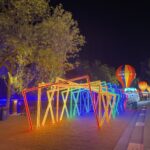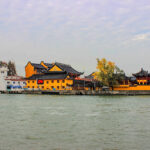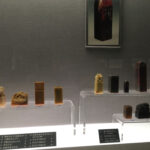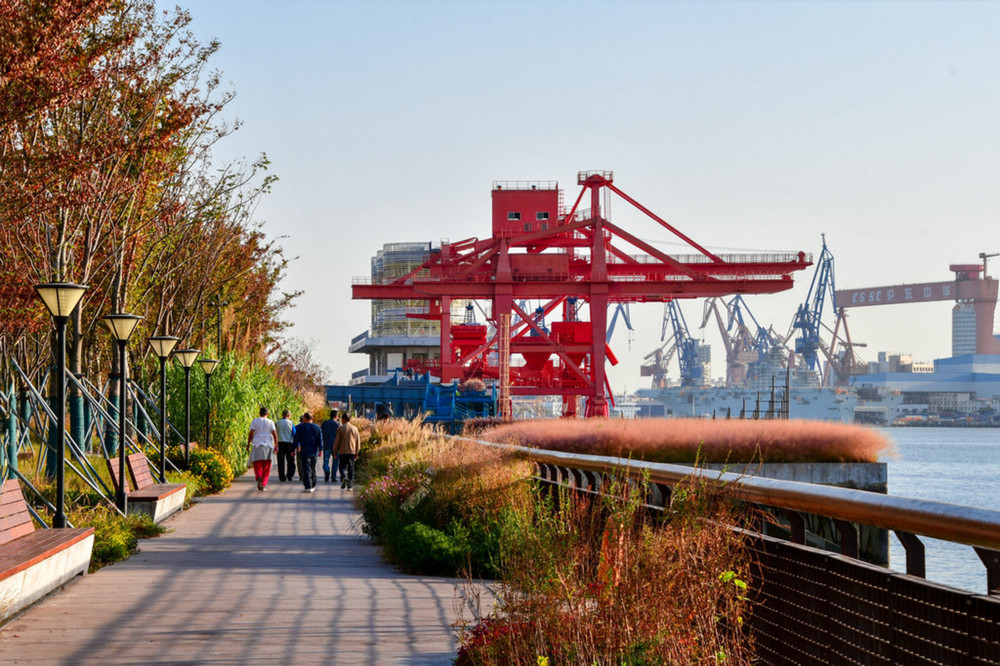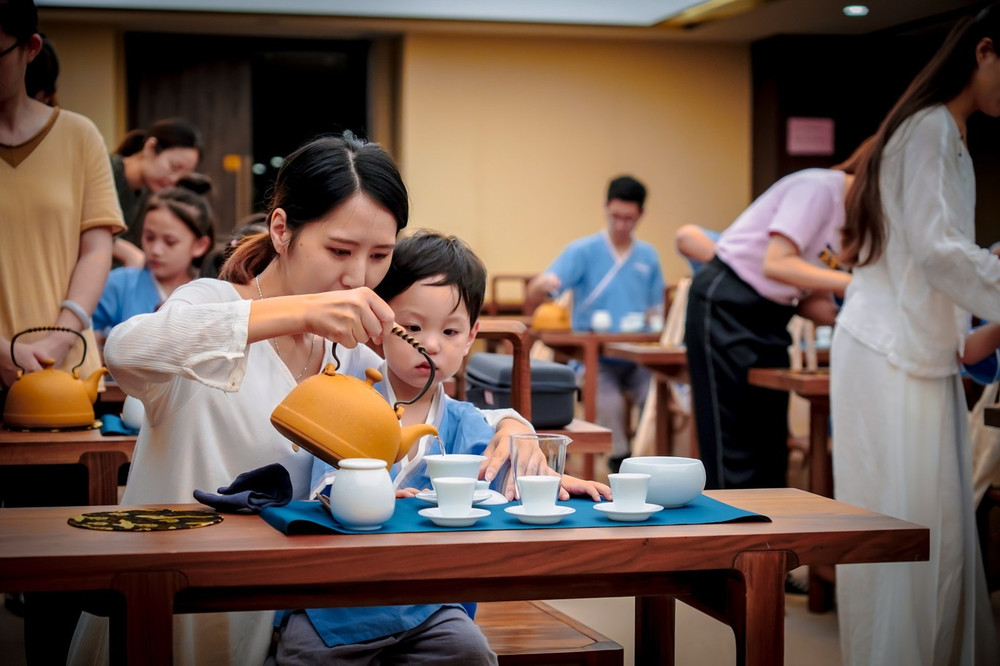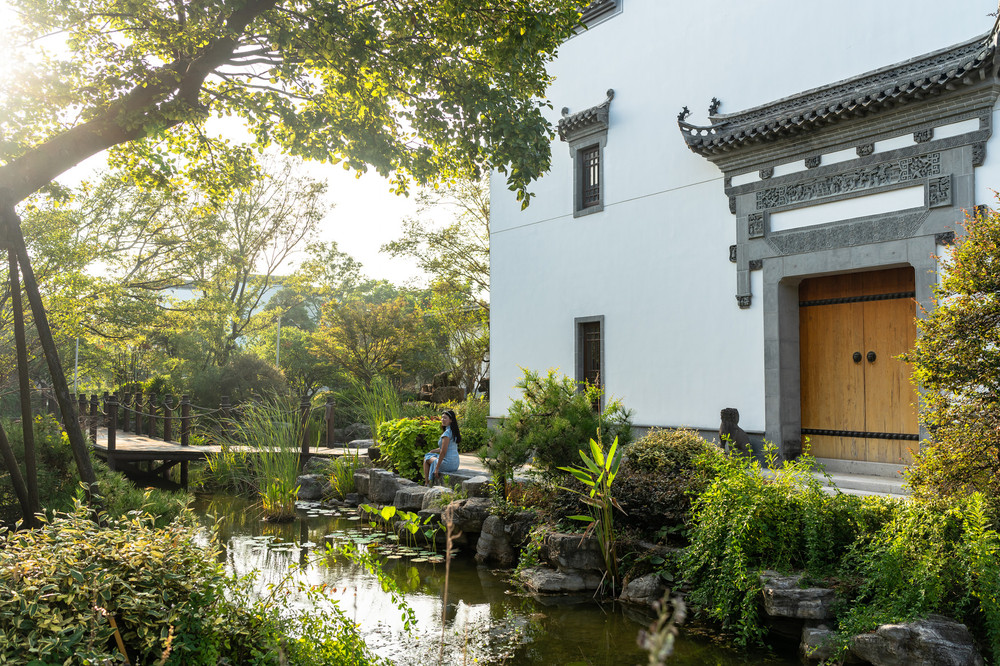Duration: 1 day
Time: April
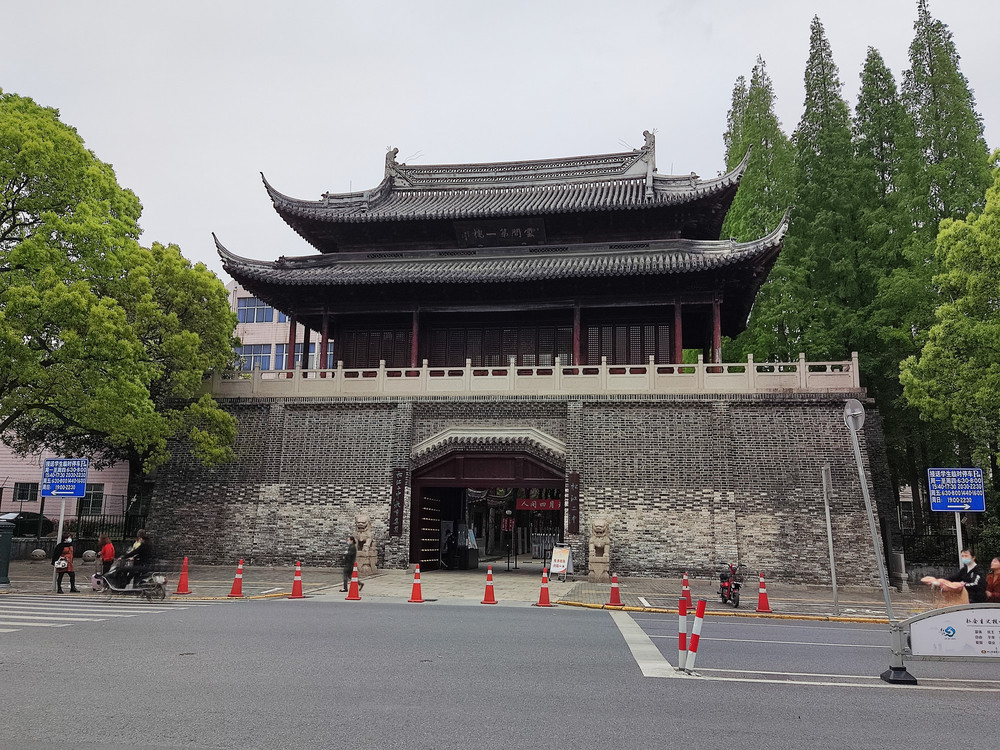
Cost per person: 300 yuan
Company: Solo trip
Method: Cycling
The author visited these places: Sheung Shing Tianma Mountain, Guangfulin Ruins, Sheung Shing Museum, Fangta Garden, Yunjian No.1 Building, Cheng Shifa Art Museum, Sheung Shing Mosque, Xilinn Temple, Fangta.
Published on 2021-04-18 10:14
A month ago, I cycled to Sheung Shing twice, visiting Tianma Mountain and Guangfulin Ruins Park. Today, I chose to cycle through the urban area of Sheung Shing again. The highlights of Sheung Shing are mainly concentrated on Zhongshan Road, which stretches three kilometers from Zhongshan East Road to Zhongshan West Road, offering a rich journey from ancient times to the present, encompassing culture and history. It is necessary to introduce Sheung Shing again, which was historically known as Huating and also called Yunjian or Bass Homeland. In the tenth year of the Tianbao era of the Tang Dynasty (AD 751), Huating County was established and later renamed Sheung Shing County. Before Shanghai was opened to foreign trade, Sheung Shing was the political, economic, and cultural center of the Shanghai area, historically known for the saying ‘The wealth and taxes of Su (Suzhou Prefecture) and Song (Sheung Shing Prefecture) account for half of the world’.
Itinerary: City – Sheung Shing Urban Area
Distance: Approximately 70 kilometers round trip
Highlights: Sheung Shing Museum – Fangta Garden – Yunjian No.1 Building – Sheung Shing Science and Technology Museum Cheng Shifa Art Museum – Sheung Shing Mosque · Xilinn Temple – Si Lu Yuan – Cangcheng Rice Market – Sheung Shing Intangible Cultural Heritage Learning Base – Guanding Temple – Da Cang Bridge
Sheung Shing Museum is not large in scale, with two floors and an entrance in the style of a Suzhou garden with white walls and black tile roofs. Compared to those in Fengxian and Qingpu, Sheung Shing’s long history makes the museum’s size somewhat small. The outdoor area of the museum has many stone inscriptions, which are worth visiting. The museum displays historical relics unearthed in the Sheung Shing area to date, including precious cultural relics from the Song, Yuan, Ming, and Qing dynasties unearthed from the Xilinn Pagoda and Fangta underground palaces. The second floor tells the story of Sheung Shing, with exhibits that are less regular. The first floor features a large Yuan Dynasty Porcelain Warehouse – Cultural relics unearthed from the Yuan Dynasty site in Taicang, which are more complete than those on the second floor.
Fangta Garden is located next to Sheung Shing Museum, with the Sheung Shing Science and Technology Museum next door. Across the street from Sheung Shing Science and Technology Park is Yunjian No.1 Building, which was first called during the Tongzhi era of the Qing Dynasty and can be regarded as the tallest building in Sheung Shing City at that time, a landmark of ancient Sheung Shing. The ‘Yunjian No.1 Building’ seen today was restored and rebuilt in 1999 and is now the main entrance of Sheung Shing No.2 Middle School. It features a double-eave hip-and-gable roof style, with upturned corners and a quaint charm.
Cheng Shifa Art Museum covers an area of 2541 square meters, with the building being a Ming and Qing Dynasty ancient building, and the museum’s gate is decorated with upturned eaves and brick carvings. Cheng Shifa was a native of Sheung Shing, a Chinese Shanghai School calligrapher and painter, who was unique in the portrayal of figures and birds, and had expertise in the fields of comic strips, New Year paintings, illustrations, and annotations. Compared with the Songjiang Museum, the scale of the Cheng Shifa Memorial Hall is much larger. The surrounding buildings enclose the small bridge, flowing water and Taihu stone that add the finishing touch, adding a touch of modernity to the antique garden architecture. In the exhibition hall, there are famous paintings and calligraphy from the Yuan, Ming and Qing dynasties as well as fine paintings and calligraphy created by Cheng Shifa himself. Among ancient paintings and calligraphy, Huang Gongwang, Ni Zan, Shen Zhou, Wen Zhengming, Dong Qichang, Chen Laolian, Xu Wei, Bada Shanren, Xugu, Wu Changshuo, etc. are all milestone figures in the history of Chinese art.
The 700-year-old mosque is locked and not open to the public during the epidemic. The SongThe similarity between them lies in that both are brick-wood structures and both started in the Song Dynasty. The Yuanying Pagoda is the tallest ancient pagoda in Shanghai. Under the arched small stone bridge is a carp pond. The pond water is clear, transparent and very clean. The goldfish in the pond are of various sizes. The goldfish consecrated in the ancient temple and famous temple are more colorful and stronger than ordinary ones. The ancient temple does not charge admission tickets, gives three sticks of incense, and the incense money is as you wish. There are vegetarian noodles available at noon for purity and abstinence.
According to legend, in ancient times, the four-gill perch in Songjiang was particularly famous. This fish ranked first among the four famous fishes in China, was famous in Jiangnan, and was only produced in Songjiang. Therefore, Songjiang is also known as ‘Lu Township’. As the name suggests, Siluyuan has the meaning of commemorating Songjiang and this specialty, which shows the great significance of this garden. The brick-carved screen wall has three pictures, from left to right are ‘Crane Dancing in Yunjian’, ‘Lu Ji’s Prose Poetry’, and ‘Sunset in Lu Township’. The entire large wall is the most attractive place in the entire park.
Dong Qichang’s Shangshu Square. The original site has long disappeared, and only a granite pillar is left. The Lujiang public rental housing next to the park is the best government public rental housing I have seen. The so-called Cangcheng means that the largest grain storage for water transportation at that time was in the rice shops on this street. The farm tools displayed in Cangcheng are on Zhongshan West Road in Songjiang. It is a little-known old street, extending from Xilin Road in the east to Yushu Road in the west. It can also be regarded as the oldest Shanghai. The entire old street is being developed. This is a training institute used to display the culture of the old street. Pass through the narrow footpath and taste the beauty and the flavor of the times! The well-preserved Ming and Qing architecture. There are still many Ming and Qing buildings on the entire street.
The area boasts numerous intangible cultural heritage displays, with the Dacang Bridge being a landmark scenery of Songjiang. This large five-arch stone arch bridge measures 54 meters in length, 5 meters in width, and 8 meters in height. It is the largest existing stone bridge in Songjiang and also one of the larger stone arch bridges in the Ming Dynasty in the Shanghai region. Records indicate that during the Ming and Qing dynasties, a granary city was built south of the Dacang Bridge, complete with city walls, four gates, watchtowers, and a moat, all on a grand scale. It can be said that the construction of the granary city spurred rapid development in the western part of Songjiang city, ultimately influencing the layout of ancient Songjiang’s urban development.
The Meng Jiang Pavilion by the bridge is said to be the departure point of the folk tale of Meng Jiangnu, a woman from Huating, who is believed to have embarked on a long journey north to find her husband from this pavilion. From the Dacang Bridge, the Meng Jiang Pavilion, together with the nearby Guanding Temple, creates a harmonious blend of pavilion and temple, adding to the aesthetic appeal. Originally known as the Shuicang Guan Yu Temple, the Guanding Temple was first established during the Ming Dynasty with the initial intention of using Guan Yu’s martial spirit and loyalty for the protection and welfare of the people. During the Qianlong period, it was renamed Guanding Temple and was renovated by the Songjiang Buddhist Association in 2014. It is now a Buddhist activity venue and the site of the Buddhist Dharma protector, Guan Gong. The term ‘to pour the essence of butter’ is used metaphorically in Buddhism to represent the imparting of wisdom, enlightening people and causing a complete awakening, which is also used to describe the great inspiration one receives from listening to profound advice. Although the temple complex is not large, it is full of winding paths and exudes an ancient charm without being outdated.
Songjiang has a long history and is known as the ‘Roots of Shanghai’. It was once the center of the textile and dyeing industry, economically prosperous, and has numerous existing historical sites. This is my third cycling trip to Songjiang in two months, and I still find many points of interest. In fact, as long as one has interest and hobbies, there is a wealth of cultural history to be explored in a region or city. I look forward to my next cycling adventure!
